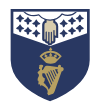Detailed introduction of the Royal College of Physicians of Ireland:
Introduction
The Royal College of Physicians of Ireland is a professional organization in Ireland dedicated to improving the practice of general medicine and related medical specialties. It mainly certifies physicians through examinations to ensure that doctors have the ability to provide the best medical services to patients.
Overview
Members and students: The college has 13,000 students, license holders, members and academicians from more than 90 countries and 29 different specialties. Its members and academicians have a certain influence in the global medical field. They not only have rich experience in their respective professional fields, but also actively participate in the various activities of the college to promote the development of medical education and medical practice.
Activities and courses: The college often holds various medical conferences, seminars, training courses and other activities, providing a platform for medical professionals to communicate and learn. At the same time, the college also provides a variety of medical education courses and training programs, including professional training courses, diploma courses and continuing medical education courses, etc., to meet the learning needs of different levels and professions.
History
The college was founded in 1654 by John Stearne, a professor and registrar of Trinity College Dublin. It was originally called the "Trinity Hall Brotherhood of Physicians". Its first office was located in Trinity Hall provided by Trinity College.
In 1692, King William III and Mary II of the United Kingdom granted a royal charter to make physicians independent of Trinity College, but it also meant that they had to leave Trinity Hall. It was not until the opening of Sir Patrick Dun Hospital in 1812 that the college established its headquarters in the hospital.
In 1860, the college purchased the property of the Kildare Street Club on Kildare Street, but the building was destroyed by fire in November 1860. The college then rebuilt it according to its own design and put it into use in 1864. It has been the location of the college ever since.
1890 In 1654, the college adopted its current name according to Queen Victoria's charter.
Founded in 1654.
School Strength
Faculty: Most of the college's teachers are experts and authorities in the field of medicine. They not only have a deep academic background, but also have rich clinical practice experience. These teachers are able to impart the latest medical knowledge and clinical skills to students and provide them with high-quality medical education.
Course System: It has a complete medical education course system, covering all aspects from basic medical knowledge to clinical medical practice. Its course setting is closely integrated with the latest trends in medical development and clinical needs, focusing on cultivating students' clinical thinking ability, practical operation ability and problem-solving ability. The college also provides courses of various levels and types according to the needs of different majors and students, such as postgraduate courses, specialist training courses, continuing medical education courses, etc.
Examination Certification: The college's examinations are highly recognized internationally. Doctors who pass its examinations to obtain membership (MRCPI) or academician qualifications (FR CPI) are recognized to a certain extent worldwide. The college has examination centers in many countries and regions overseas, such as Malaysia, Oman, India, Saudi Arabia and Bahrain, providing convenience for international students.
Institutional nature
Professional member institution, postgraduate medical training college.
Educational philosophy
Committed to cultivating and supporting students, interns, members and academicians to become leaders in medical service provision and change, and to create a globally connected community of doctors through training, education and publicity to improve people's health. Its core values include hospitality, interconnectedness, respect for others, positive response, courage to challenge and trustworthiness, which are integrated into the college's education and teaching and daily management.
Key disciplines
The college covers a wide range of professional directions, mainly including cardiology, chemical pathology, dermatology, clinical microbiology, gastroenterology, geriatrics, hematology, infectious diseases, immunology, oncology, nephrology, neurology, pediatrics, rehabilitation medicine, respiratory medicine, rheumatology, etc.
Departments
The college has the following departments and institutes:
Institute of Medicine: Provides various medical research and training courses for medical professionals to promote the development and progress of medical science.
Institute of Obstetrics and Gynecology: Focuses on medical education, training and research in the field of obstetrics and gynecology, cultivates obstetric and gynecological professionals, and improves the level of obstetric and gynecological medical services.
Department of Occupational Medicine: Carries out training and research related to occupational medicine, pays attention to the impact of occupational environment on health, and provides professional support for occupational health.
Department of Pathology: Responsible for teaching and research in the field of pathology, cultivates pathology professionals, and promotes the application of pathology in disease diagnosis and treatment.
Department of Pediatrics: Dedicated to education, training and research in pediatrics, pays attention to children's health and disease prevention, and provides professional guarantees for pediatric medical services.
Department of Public Health Medicine: Carries out research and training in the field of public health, formulates public health policies and strategies, and improves the level of public health.
Ranking
No clear comprehensive ranking information was found, but the college's reputation and influence in the field of medical education and professional training make it an important position in the field of medicine in Ireland and even in the international medical field.
Fees
No clear specific tuition standards have been found.
Campus
Historic Building: The college's headquarters is located at 6 Kildare Street, Dublin. This historic building is one of the important symbols of the college and an important place for the college to hold conferences, academic activities, etc. In addition, the college has its administrative headquarters in Frederick House, 19 South Frederick Street.
Teaching facilities: It has advanced teaching facilities and equipment, such as libraries, laboratories, simulated wards, etc., which provide students with a good learning and practice environment. The college's library was founded in 1713 and has a large collection of precious materials such as printed materials and manuscripts related to medical history and medical education. It is one of the important resources for studying the history of medicine in Ireland.
Academic atmosphere: The campus has a strong academic atmosphere, and various academic lectures, seminars, conferences and other activities are often held, attracting medical experts and scholars from home and abroad to participate. These activities provide students with opportunities to communicate with experts, broaden their academic horizons, and promote the dissemination and exchange of medical knowledge.
-

Dublin City University
-
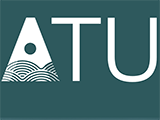
Atlantic Technological University
-
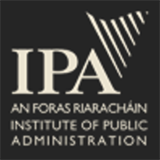
Institute of Public Administration
-
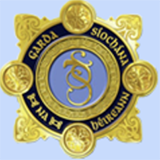
Garda Síochána College
-

Munster Technological University
-

Maynooth University
-

Dublin Business School
-
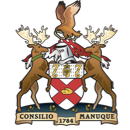
Royal College of Surgeons in Ireland
-

Technological University Dublin
-

National University of Ireland
-

Mesoamerican University
-

Istmo University
-

Mariano Galvez University of Guatemala
-

Regional University of Guatemala
-

Galileo University
-

Francisco Marroquín University
-

Rafael Landívar University
-

University of the Valley of Guatemala
-

University of San Carlos of Guatemala
-

Technological Institute of Tlaxcala Plateau
-

Golfo University
-

Technological University of South Sonora
-

Technological University of Huejotzingo
-

Tizimín Institute of Technology
-

Chilpancingo Institute of Technology

